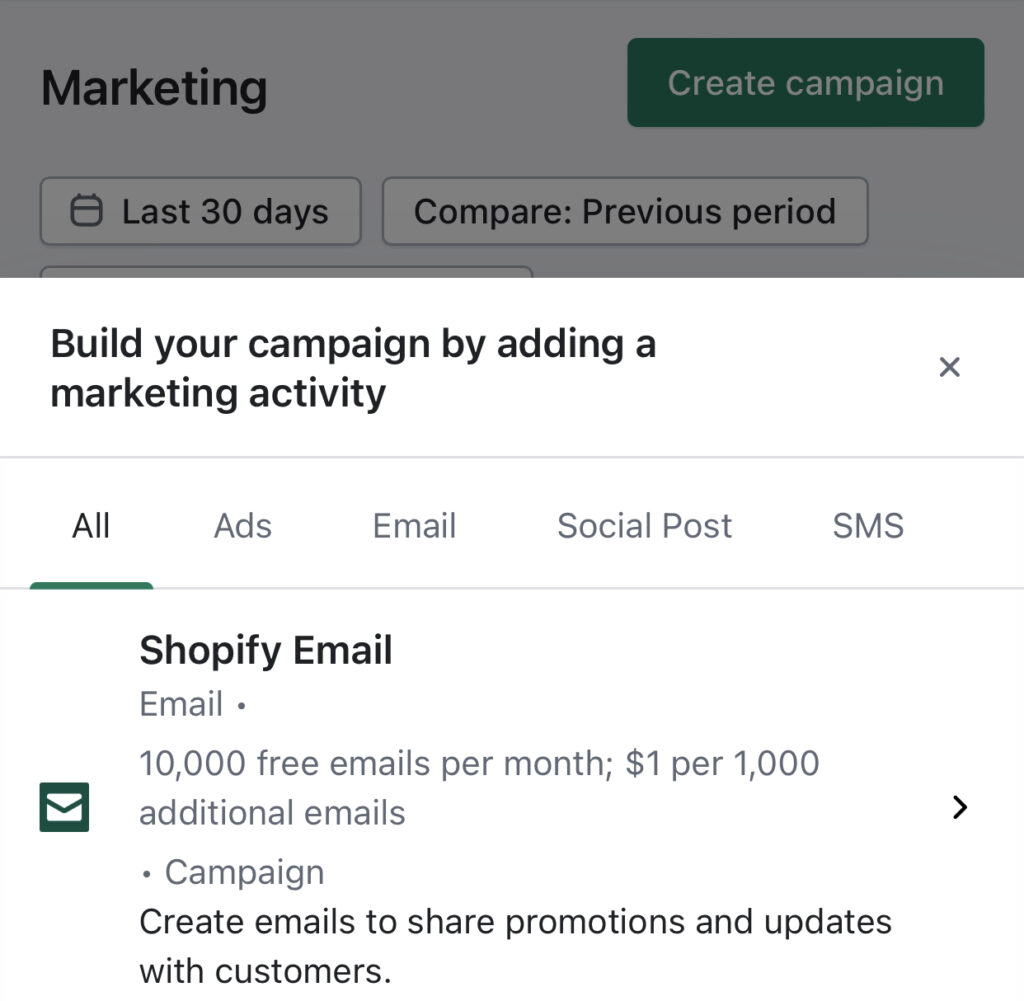Selling on Amazon vs Shopify: The Major Differences
Shopify and Amazon are both popular specialized eCommerce platforms, but they serve different purposes and cater to different types of users. Here are some key differences between Shopify and Amazon:
Business Model
Shopify is primarily a platform that allows individuals and businesses to set up their own standalone online stores. It provides tools and features for building and managing an eCommerce website.
Amazon, on the other hand, is an online marketplace where sellers can list and sell their products alongside millions of other sellers.
MORE: Top Amazon Seller Tools
Ownership and Control
With Shopify, users have full ownership and control over their online stores. They can customize the design, functionality, and branding of their stores.
In contrast, when selling on Amazon, sellers operate within the framework and guidelines set by Amazon. Amazon has control over the overall platform, policies, and customer experience.
Store Setup and Maintenance
Shopify offers a user-friendly interface and a wide range of customizable themes and templates, making it relatively easy for users to set up their shopify stores without advanced technical knowledge. The platform takes care of web hosting, security, and software updates.
In contrast, selling on Amazon requires a seller to create product listings and manage inventory through Amazon’s seller interface.
MORE: How to sell on Amazon
Branding and Marketing
Shopify enables sellers to establish their unique brand identities and implement customized marketing strategies. Sellers can build their customer base and drive traffic to their stores through various marketing channels.

Amazon, being a massive marketplace, provides sellers with access to a large customer base and handles certain marketing aspects, such as search visibility and product recommendations.
MORE: Controlling your brand on Amazon
Fees and Costs
Shopify charges users a monthly subscription fee, which varies based on the selected plan. In addition, transaction fees are applicable when using external payment gateways.
Amazon has a different fee structure, including referral fees on each sale, subscription fees for professional selling plans, and additional fees for services like Amazon FBA (Fulfilment by Amazon) if sellers choose to use them.
MORE: Calculate your Amazon costs
Fulfillment and Shipping
Sellers on Shopify have flexibility in choosing their preferred fulfillment and shipping methods. They can integrate with third-party logistics providers or handle fulfillment in-house. Shopify also offers its own fulfillment service called Shopify Fulfillment Network.
Like Shopify, Amazon offers the flexibility of shipping items yourself. However, it also provides a more convenient method – its renowned Fulfillment by Amazon (FBA) service. The Amazon FBA handles storage, packing, and shipping for sellers. FBA also allows sellers to leverage Amazon’s vast logistics network, including Prime two-day shipping, which can enhance customer satisfaction.
Payment Processing
Shopify provides its integrated payment gateway called Shopify Payments, which allows sellers to accept payments directly from their store. Sellers can also integrate with third-party payment gateways to offer more payment options to customers.
Amazon has its own payment system called Amazon Pay, which customers can use to make purchases. However, on the Amazon marketplace, sellers typically receive payments directly from Amazon, and disbursements are made periodically.
Recommendation
Get your Amazon payments quickly and easily using Payability. Find its review here.
While Shopify and Amazon offer distinct advantages, many sellers choose to have a presence on both platforms to maximize their reach and sales potential. By leveraging Shopify’s customization and branding options, sellers can create a unique shopping experience for their customers.
Simultaneously, by listing products on Amazon, sellers can tap into its vast customer base and benefit from its robust logistics infrastructure. This dual presence allows sellers to expand their reach and cater to a broader range of customers.
Shopify vs. Amazon: Pros and Cons
Shopify Pros and Cons
Pros
- Users have total control over their store’s design, customer experience, and branding.
- Users find the store easy to create and manage using the tools available on it.
- There is no limit to the range of products sellable.
- There are extra functionalities and integrations included in the apps.
- The customer support service is top-notch.
Cons
- There is an increase in the functionalities and responsibilities of the users.
- Extra fees may be incurred in the use of some functionalities.
- Users are responsible for generating traffic to their store.
Amazon Pros and Cons
Pros
- Unlimited exposure to the products of the users.
- It is a reliable and credible platform with a lot of positive reviews.
- Leveraging the platform logistics and fulfillment infrastructure is possible using Fulfilment by Amazon.
- It makes it easier for the users to reach global audiences since it is operating in multiple countries.
- Established steps and guidelines are in place to guide the listing and selling of products.
Cons
- The competition rate is high due to many sellers selling the same or similar products.
- Users have no total control over the designs and branding of their market.
- There may be an extra cost incurred in the use of some functionalities.
- Paying a fulfillment and referral fee will reduce the total generated profit.
- After receiving repeated negative reviews about your products and services, Amazon may suspend your account.
To know more about Amazon suspensions as a seller and how you can handle it, read our detailed FAQs article on Amazon seller suspensions.
Is it Cheaper to Sell with Shopify or Amazon
The cost of selling on Shopify or Amazon can vary depending on several factors. Here’s a breakdown of the potential costs associated with each platform:
For Shopify
| Type of Fee | Description |
|---|---|
| Subscription | Shopify offers various subscription plans, starting from $29 per month for the basic plan (Shopify, annual subscription) and going up to $299 per month for advanced features (Shopify Advanced, annual subscription). These fees cover the basic functionalities of the platform. |
| Transaction | If you use a payment gateway other than Shopify Payments, additional transaction fees ranging from 0.5% to 2% may apply, depending on your subscription plan. However, if you use Shopify Payments, these transaction fees can be waived. |
| Add-ons and Themes | Shopify offers a marketplace for various add-ons, plugins, and themes. Some of these are free, but others come with a cost. The pricing for these add-ons can vary. |
For Amazon
| Type of Fee | Description |
|---|---|
| Professional Seller Account | To sell on Amazon, you need a professional Amazon seller account, which costs $39.99 per month. This account type is suitable for businesses planning to sell more than 40 items per month. However, individual seller accounts are available for a lower fee ($0.99 per item sold), but they come with more limited features. |
| Referral | Amazon charges referral fees for each item sold, which typically range from 6% to 45% of the item’s sale price, depending on the category. These fees contribute to the overall cost of selling on Amazon. |
| FBA (Optional) | If you choose to utilize Amazon’s fulfillment service (Fulfillment by Amazon – FBA), additional fees will apply for storage, picking, packing, and shipping your products. These fees depend on the size and weight of your products. |
Key Takeaways
Overall, comparing the costs of selling on Shopify and Amazon is not a straightforward task. It depends on various factors such as your business size, sales volume, and specific needs. While Shopify has subscription fees and transaction fees (if not using Shopify Payments), Amazon has professional account fees and referral fees (plus optional FBA fees). It’s essential to evaluate these costs and consider the features, audience reach, and support offered by each platform to determine which one aligns better with your business requirements.

Leave a Reply